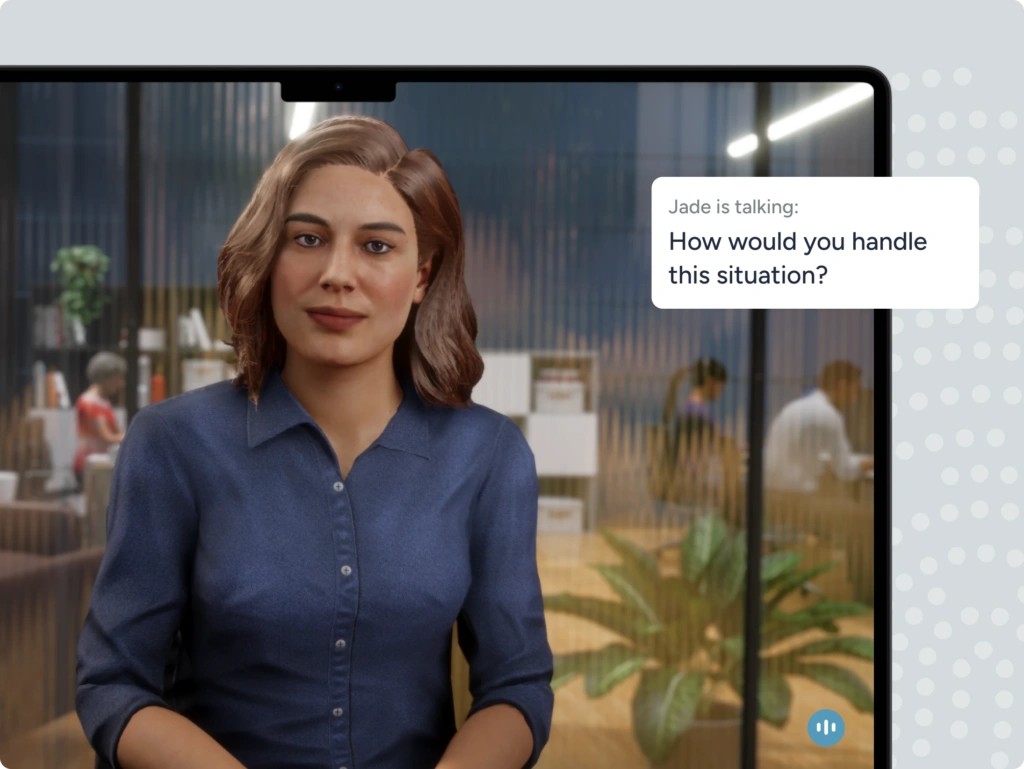Enterprise organizations need to adapt and innovate continually to remain competitive and effective. These changes often center around a critical organizational pillar—human capital.
Human capital changes have far-reaching impacts into an organization’s culture and performance, and leaders need to be cognizant of how intentionally designed learning strategies drive organizational transformation.
Let’s explore some insights and frameworks from a recent discussion between Stacey Dietsch, EVP, Talent Pipeline at Liberty Mutual, and Mark Atkinson, CEO at Mursion, offering strategic pathways to spearhead effective learning and organizational transformation.
Frameworks for Sustainable Change
Drawing from McKinsey’s change management insights, Stacey shared the “Five A’s” framework that provides a robust structure for implementing change:
- Aspire: Set a clear vision for where you want to go.
- Assess: Evaluate current capabilities and organizational gaps.
- Architect: Design interventions and strategies to bridge identified gaps.
- Act: Implement the changes needed for transformation.
- Advance: Use data to monitor progress and refine strategies.
Additionally, Stacey considers the influence model an important consideration when introducing organization change. From answering “the why” behind the change through stakeholder management and communication, the influence model encourages leaders to consider if they have the “talent and skill needed for the change to be effective.”
Stacey encourages teams to consider “learning objectives, knowledge gaps, and the opportunities for behavior change through practice and skill-building.”
Key Takeaway: Adopting a structured approach to change management can drive effective and enduring transformations in organizational culture and skills and ensure organizations are moving together on the path to change.
The Intersection of Strategy and Culture
Liberty Mutual is a real-world example of an organization undergoing transformative change. As they consider their 2030 strategy, they’re focusing on building a culture where every employee is supported and has the opportunity to grow. For HR leaders, this means setting clear, measurable goals that align with strategic objectives and creating an environment that encourages continuous learning and growth.
An important part of this transformation is the commitment Liberty Mutual is making to its employees. Because the organization is adjusting its approach, they also want to make sure they are making commitments to provide career and leadership development opportunities so that employees are highly supported as they strive to meet new challenges.
Key Takeaway: Embed cultural aspirations into strategic objectives. This alignment ensures that performance expectations are clear and that the system supports ongoing growth and development at every level.
Leveraging Technology for Learning
Stacey shared how adaptive learning platforms can empower employees to thrive despite how the traditional workplace evolved and became more distributed post-pandemic. According to Stacey, “Investing in adaptive learning technologies isn’t just about skill-building; it’s about creating a culture of continuous growth and innovation.”
Senior leaders can leverage these insights to build resilient teams equipped to handle change with confidence. Adaptive learning systems not only enhance individual capabilities but also strengthen organizational flexibility, ensuring readiness for future challenges.
In addressing the challenge of introducing adaptive learning strategies to an organization, Liberty Mutual implemented simulation-based learning. By partnering with an innovative platform, they used virtual scenarios to create a safe environment where leaders at all levels could practice giving and receiving constructive feedback.
For Liberty Mutual, “the best way to achieve that behavior change is through practice… immersive simulations were the perfect answer to that need, creating a safe space for leaders to practice and grow.”
Moreover, AI technologies offer exciting possibilities for blending traditional coaching with digital innovation, helping to personalize and scale development initiatives.
Key Takeaway: Utilize technology to simulate real-world scenarios, providing your team with practical, safe spaces to practice essential skills. AI can also be a powerful tool in enhancing personalized learning experiences.
Measurement and Feedback: Tools for Continuous Improvement
With the right tools and a rigorous listening strategy, Liberty Mutual also keeps an eye on culture change through behavioral. Their approach to measurement, which considers factors like employee comfort in providing feedback, serves as a foundational tool for revising and refining HR strategies.
Additionally, Stacey shared insight into how Liberty Mutual remains focused on and committed to these initiatives at all levels of the organization. With a series of touchpoints across the company, cross functional teams connect the strategic objectives with tactical workstreams, KPIs and scorecards so that every stakeholder stays aligned and engaged as the transformation progresses.
Data-driven decision-making is a cornerstone of effective human capital strategies. Stacey underscored the value of leveraging analytics to measure the impact of training programs and identify opportunities for improvement. By turning insights into action, organizations can refine their approaches to address evolving workforce needs.
Key Takeaway: Establishing a robust talent analytics strategy will aid in measuring progress against cultural objectives consistently, thus ensuring strategic alignment and growth.
Conclusion
As organizations like Liberty Mutual demonstrate, the path to effective transformation lies in a thoughtful, technology-driven approach to learning and development. By aligning strategy with culture, leveraging advanced technologies, and implementing a structured change framework, HR leaders can drive measurable success and secure a competitive edge for their organizations.
Human capital transformation is not a one-size-fits-all endeavor. It requires a nuanced approach that integrates technology, leadership, and collaboration. By committing to these principles, senior HR and L&D leaders can equip their workforce to navigate complexities and achieve measurable success.


